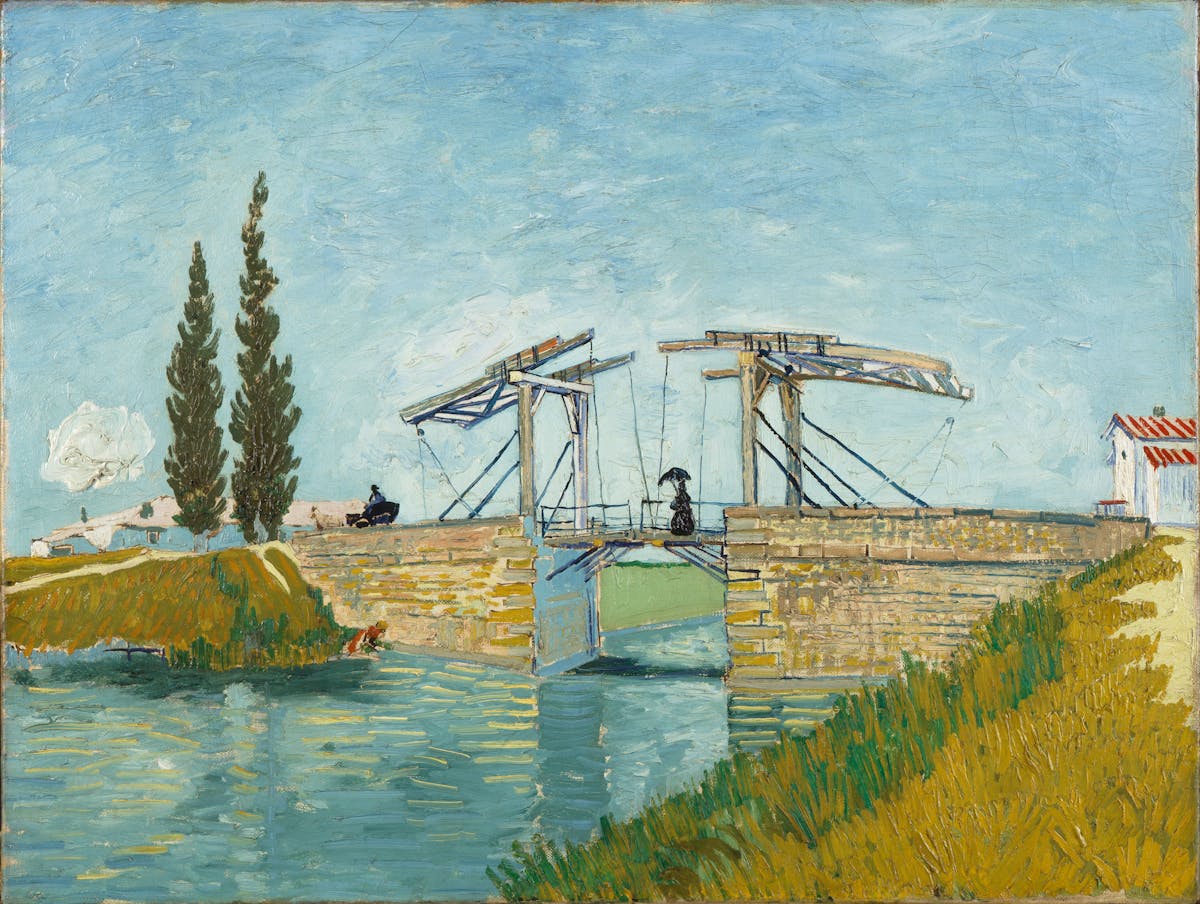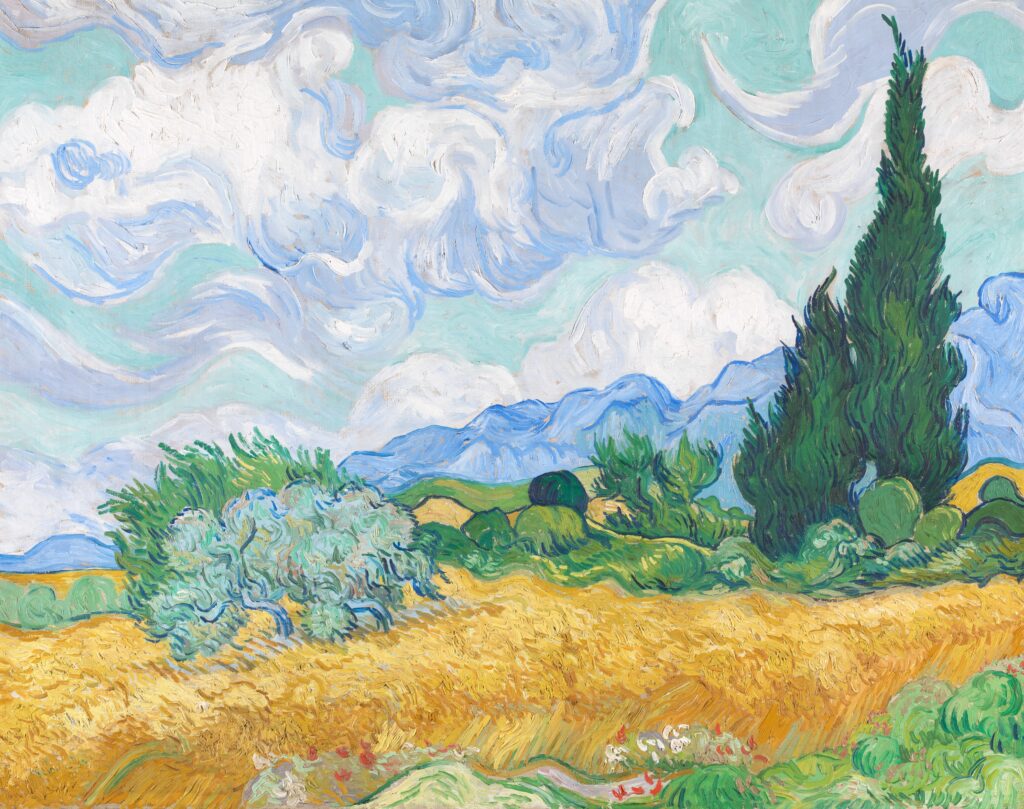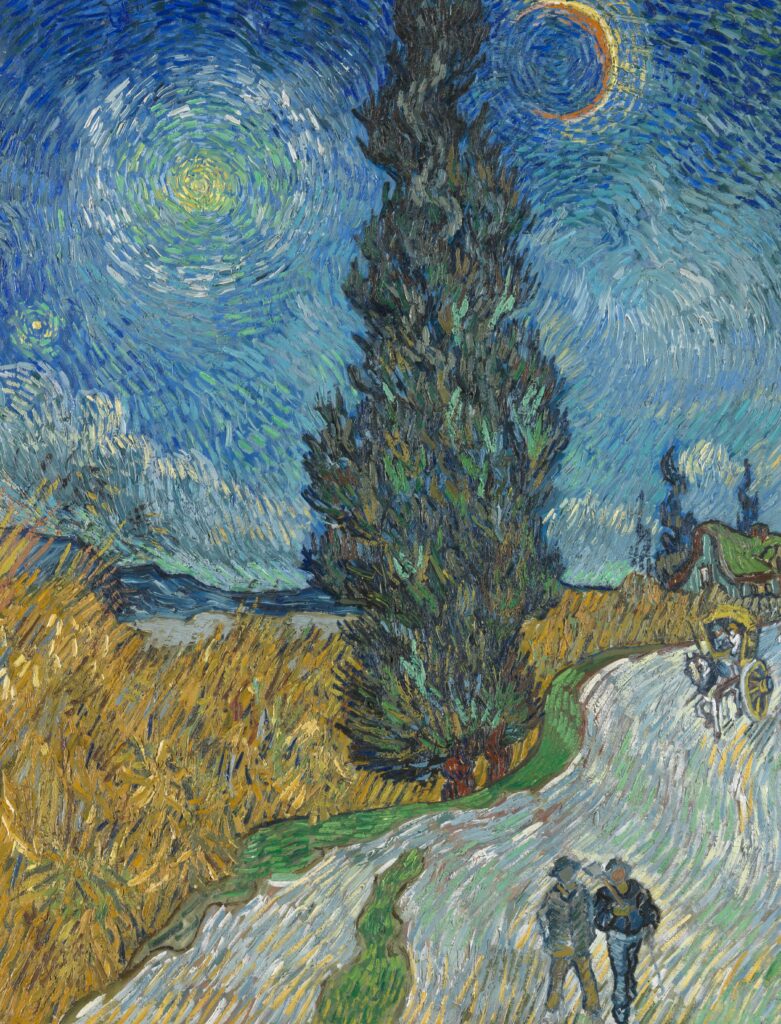Van Gogh’s Cypresses Take Root at Manhattan
And star in some of Western art’s most incandescently bendy landscapes.

“Van Gogh’s Cypresses,” at the Metropolitan of Art, brings the mad Dutchman’s conifers out of the shade and into the bright light of some of Western art’s most incandescently bendy landscapes. Opening Monday and due to stay up through the end of August, the show brings the south of France to the east of Central Park. It marks the meeting of place and perspective, preserved in paint, with trees that, it seems, were never far from Vincent van Gogh’s vision.
“Cypresses” is synched to the 170th anniversary of van Gogh’s birth, reuniting 24 paintings and 15 drawings culled from 30 collections, public and private. “Starry Night” made the trip uptown, joining a tribe of paintings with whom it stylistically rhymes. It makes more sense here than reproduced on a poster over a dormitory bed. One work, from an unnamed private collection, is so jealously guarded that photographs are banned.
Cypresses are mostly evergreens, but the paintings and drawings here were composed during a compressed season, between February 1888 and May 1890. Van Gogh shot himself to death the following July. Before that he’d moved to Arles from Paris in 1888, jumpstarting a period of astonishing creativity. The painter Paul Gauguin visited and van Gogh sliced off his left ear with a razor blade, leading to a diagnosis of “acute mania with generalized delirium.”
That incident and others led to the admission of the artist to the Saint-Paul-de-Mausole asylum, a former monastery where van Gogh was able to work in a small studio adjacent to his room. The only apertures were barred windows. “Window in the Studio” captures this place of confinement and creativity. Beyond the bars is a walled garden. Inside, though, are replications of van Gogh’s own paintings, acts of seeing if not — maybe — sanity.
“Trees in the Garden of the Asylum” is another astonishment, its purples and greens suggesting a kaleidoscope’s filter. The cypresses are at the center, framed by two bare pine trunks, twisted and angular, that recall the prison bars, worming up out of the picture. The piece, in private hands, evokes echoes between the window from which the painting was made and the frame that holds it, both catalysts and constraints.
Other paintings are bound by perception’s limits rather than confinement. “The Starry Night” is a view of the firmament, its pinwheeling swirls not too distant from the images of dying stars and reclusive black holes brought back by what might be called, with apologies to James Webb, the van Gogh of telescopes. There, too, are the cypresses, rooted in the ground, but, like the Bible’s Tower of Babel, scraping the heavens.
“A Wheat Field with Cypresses” is the sunlit companion piece to “The Starry Night,” sharing its swirling skies. The daytime, though, brings into view fields of wheat that sway in golden brown. Its clouds are white and fluffy, seemingly blown by a magisterial mistral. “Field With Poppies” delivers a riot of color — it’s summer — anchored by the cypresses at the picture’s edge, guardrails against an expanse of vertiginous bloom.

National Gallery of London, via Metropolitan Museum of Art
If van Gogh linked his cypresses to land and sky, “Drawbridge” shows them in relation to both photosynthesis and hydration. We are looking at the Langlois Bridge, which spans the Arles-Bouc Canal, but something of the scene’s easy civilization recalls his native Holland. The canal and the sky speak a common azure language, and the solitary strolling Arlésienne and the two cypresses telegraph the modest pleasures of France’s south.
“Cypresses” is a double-clicked confrontation with majesty, as the cypress moves from distant sentinel to a flora in focus. Again twinned, van Gogh described their demand for a “difficult shade of bottle green” that is both light and dark, and somehow another shade too. It is done en plein air, with pebbles embedded in the paint and incisive attention paid to light. The dense green foliage contrasts with the slightest sliver of a moon. It will soon be dark.
The moon reappears in “A Walk at Twilight.” It is a little later in the day than “Cypresses,” so a band of orange flame marks the place where land and horizon touch. The landscape is slopey, somewhat off-kilter, and marked with low bushes that bear no slight resemblance to the couple strolling in the foreground. The human form is rare in this show, and it is almost a surprise to see them. They wander toward the distant cypresses, in no hurry.

Collection Kröller-Müller Museum. Photo by Rik Klein Gotink via Metropolitan Museum of Art
The show’s latest work is “Country Road in Provence by Night,” from May 1890. The Met terms it a “pivotal summary picture” that van Gogh called his “last try” at depicting a “cypress and a star.” It holds the moon, the stars, a towering cyprus, and two strollers in the foreground. They could be van Gogh and Gauguin, but their paths were soon to split irrevocably. One Doctor Gachet noted how van Gogh’s coffin “disappeared under branches of cypress trees.”

